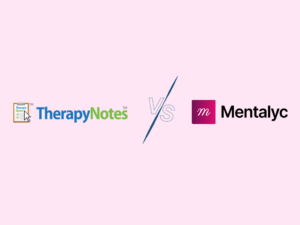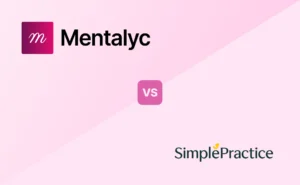Understanding Autism Spectrum Disorder
Autism, often referred to as autism spectrum disorder (ASD), is a complex developmental condition characterized by a diverse range of challenges related to communication, social interaction, and behavior. This condition is a lifelong companion, and its manifestation varies significantly from one individual to another. In this blog post, we will explore the world of autism spectrum disorder, shedding light on its diverse symptoms, its DSM-5 diagnostic criteria, and its impact on daily life.
Individuals with autism navigate a distinctive landscape of challenges and differences, encompassing intellectual abilities and social interactions. ASD shapes the way people learn, think, communicate, and engage with the world around them. It’s important to recognize that these unique characteristics do not make someone less capable, but rather reflect the richness of human diversity.
A Spectrum?
Autism is aptly referred to as a “spectrum disorder” due to the wide variation in symptoms and their severity among those diagnosed. The spectrum encompasses conditions that were previously classified separately, such as autism, Asperger’s syndrome, childhood disintegrative disorder, and an unspecified form of pervasive developmental disorder.
Autism spectrum disorder makes its presence known in early childhood, often becoming evident within the first year of life. This journey, which begins in early childhood, continues throughout one’s lifetime and presents various challenges for daily interactions. The challenges posed by autism spectrum disorder, however, are not insurmountable; instead, they require understanding, support, and accommodations to help individuals with ASD lead fulfilling lives.

New! Transfer your notes to EHR with a single click. No more copy-pasting.

Autism in the DSM-5 – Criteria for Diagnosis
Category A: Autistic Social Communication and Social Interaction
This criterion delves into the individual’s ability to engage in social interactions and communicate effectively within the neurotypical framework. It encompasses a range of social challenges, from maintaining eye contact to understanding non-verbal cues.
Category B: Repetitive Patterns of Behaviors
Category B explores the distinctive behaviors often associated with autism. This includes stimming (repetitive movements or sounds), a preference for sameness, intense special interests, and heightened sensory sensitivities. These behaviors provide valuable clues in the diagnostic process.
Criterion C: Symptoms Must Be Present Since Childhood
A crucial element in diagnosing autism is the early onset of symptoms. Criterion C emphasizes that these characteristics must have been present since childhood, distinguishing them from traits that may develop later in life.
Criterion D: Degree to Which Autism Affects Daily Functioning
Understanding how autism impacts an individual’s daily life is essential. Criterion D assesses the extent to which autism influences a person’s ability to navigate daily routines, relationships, and responsibilities.
Criterion E: Traits Not Better Explained by Intellectual Disability
Criterion E serves as a differentiator, ensuring that the traits and characteristics observed are not solely attributable to intellectual disability. This helps professionals pinpoint autism with greater accuracy.
Free Tip 🙂
In my practice, I often remember these criteria as “3A 2B C D & E”. This shorthand not only has a memorable ring to it but also relates each letter to the number of requirements associated with each criterion, making it easier to recall and apply them.
To provide a clear roadmap of the DSM-5 autism criteria, we’ve compiled them into convenient tables for reference:
| Criterion A | Persistent deficits in social communication and social interaction across multiple contexts, as manifested by the following, currently or by history. Required: 3/3 |
| 1. Deficits in social-emotional reciprocity, ranging from abnormal social approach and failure of normal back-and-forth conversation to reduced sharing of interests, emotions, or affect, and failure to initiate or respond to social interactions. | |
| 2. Deficits in nonverbal communicative behaviors used for social interaction, ranging from poorly integrated verbal and nonverbal communication, abnormalities in eye contact and body language, deficits in understanding and use of gestures, to a total lack of facial expressions and nonverbal communication. | |
| 3. Deficits in developing, maintaining, and understanding relationships, ranging from difficulties adjusting behavior to suit various social contexts, difficulties in sharing imaginative play or making friends, to the absence of interest in peers. |
| Criterion B | Restricted, Repetitive Patterns of Behavior, Interests, or Activities. Required: 2/4 |
| 1. Stereotyped or Repetitive Motor Movements, Use of Objects, or Speech (e.g., simple motor stereotypes, lining up toys or flipping objects, echolalia, idiosyncratic phrases) | |
| 2. Insistence on Sameness, Inflexible Adherence to Routines, or Ritualized Patterns of Verbal or Nonverbal Behavior (e.g., extreme distress at small changes, difficulties with transitions, rigid thinking patterns, greeting rituals, need to take the same route or eat the same food every day) | |
| 3. Highly Restricted, Fixated Interests that are Abnormal in Intensity or Focus (e.g., strong attachment to or preoccupation with unusual objects, excessively circumscribed or perseverative interests) | |
| 4. Hyper or Hypo-reactivity to Sensory Input or Unusual Interest in Sensory Aspects of the Environment (e.g., apparent indifference to pain/temperature, adverse response to specific sounds or textures, excessive smelling or touching of objects, visual fascination with lights or movement) |
| Criterion C | Symptoms must be present in the early developmental period (but may not become fully manifest until social demands exceed limited capacities, or may be masked by learned strategies in later life). Required: 1/1 |
| Criterion D | Symptoms cause clinically significant impairment in social, occupational, or other important areas of current functioning. Required: 1/1 |
| Criterion E | These disturbances are not better explained by intellectual disability (intellectual developmental disorder) or global developmental delay. Intellectual disability and autism spectrum disorder frequently co-occur; to make comorbid diagnoses of autism spectrum disorder and intellectual disability, social communication should be below that expected for the general developmental level. Required: 1/1 |
Delving Deeper: Understanding Autism Signs and Symptoms
Social Communication and Interaction Skills in ASD
People with ASD may exhibit a range of social communication and interaction characteristics that differentiate them from neurotypical individuals. These characteristics often become noticeable at an early age and can include:
- Avoiding Eye Contact: Individuals with ASD may avoid making eye contact during conversations or interactions, which can make it challenging to establish a connection through visual cues.
- Delayed Responsiveness: Failing to respond to their name by nine months of age is a common early sign of ASD, indicating difficulties in engaging with others verbally.
- Limited Facial Expressions: By nine months of age, children typically display a wide range of facial expressions, such as happiness, sadness, anger, and surprise. In contrast, individuals with ASD may exhibit limited emotional expressions.
- Difficulty in Interactive Games: Simple interactive games like pat-a-cake, which are typically enjoyed by children, might pose challenges for those with ASD, as they may struggle with the back-and-forth nature of such activities.
- Gesture Limitations: Individuals with ASD may use few or no gestures to communicate by the age of 12 months, such as waving goodbye or pointing to objects of interest.
- Lack of Shared Interests: Not sharing interests with others by 15 months of age is another characteristic associated with ASD. This means they may not actively engage in activities or conversations about topics that interest others.
- Limited Pointing: Pointing to show something interesting is a developmental milestone that children typically achieve by 18 months of age. However, individuals with ASD might not reach this milestone.
- Empathy Challenges: Failing to notice when others are hurt or upset by 24 months of age can be indicative of difficulties in recognizing and responding to the emotional states of others.
- Social Engagement: By the age of 36 months, many children naturally begin to notice and join other children in play. However, individuals with ASD may not engage in such social interactions.
- Lack of Pretend Play: Pretend play, where children imitate being someone else or engaging in imaginative scenarios, is common by 48 months of age. In contrast, individuals with ASD may not engage in this type of play.
- Limited Expressive Arts: Singing, dancing, and acting for others, which often emerge in early childhood, may be less common in individuals with ASD by the age of 60 months.
Restricted or Repetitive Behaviors and Interests
In addition to challenges in social communication and interaction, individuals with ASD often display behaviors and interests that can appear unusual or repetitive.
These include:
- Order Sensitivity: Some individuals with ASD may insist on lining up toys or objects in a specific order and become upset when this order is altered.
- Echolalia: Repeating words or phrases, a behavior known as echolalia, is observed in some individuals with ASD.
- Rigid Play Patterns: Playing with toys in the same manner consistently is common, reflecting a preference for routine and predictability.
- Focus on Specific Parts: An intense focus on specific parts of objects, such as wheels, rather than the whole object, can be a notable characteristic.
- Difficulty with Changes: Minor changes to routines or the environment can be distressing for individuals with ASD.
- Obsessive Interests: Some individuals may develop intense, narrow interests that they dedicate a significant amount of time and attention to.
- Routine Dependence: Many individuals with ASD prefer to adhere to certain routines, providing them with a sense of stability and predictability.
- Repetitive Movements: Behaviors like hand-flapping, body rocking, or spinning in circles are examples of repetitive physical movements associated with ASD.
- Sensory Sensitivities: Unusual reactions to sensory stimuli, such as heightened sensitivity or indifference to sounds, smells, tastes, visual cues, or tactile sensations, can be observed.
Other Characteristics of ASD
Beyond the core characteristics, individuals with ASD may exhibit a range of related features, including:
- Delayed Language Skills:Some children with ASD may experience delays in acquiring language and communication skills.
- Motor Skill Delays:Delayed motor skills, both fine and gross, might be observed.
- Cognitive Delays: Delayed cognitive or learning skills can impact academic progress and problem-solving abilities.
- Hyperactivity, Impulsivity, or Inattention:Some individuals with ASD may also display traits associated with attention deficit hyperactivity disorder (ADHD), such as hyperactivity, impulsivity, or inattentiveness.
- Epilepsy or Seizure Disorder:Seizures or epilepsy may co-occur with ASD in some cases.
- Unusual Eating and Sleeping Habits:Atypical eating and sleeping habits can be observed in individuals with ASD.
- Gastrointestinal Issues:Concerns such as constipation and gastrointestinal discomfort may be reported.
- Mood and Emotional Variability:Individuals with ASD may exhibit unusual mood swings or emotional reactions.
- Anxiety and Stress:Anxiety, stress, or excessive worry can be prevalent in individuals with ASD.
- Fear Responses:Some individuals may demonstrate either an absence of fear or heightened fear reactions.
It’s essential to note that not all individuals with ASD will exhibit all or even any of these behaviors or characteristics. ASD is a spectrum disorder, which means that each individual’s experience with it is unique. Understanding these characteristics is the first step toward providing effective support and fostering a more inclusive and understanding society for individuals with ASD.
Conclusion: Embracing Autism
Autism is a condition that has always existed and it is an intrinsic part of who individuals with autism are. To that end, I am sharing some words from one of my dear patients as a first step to fostering an inclusive, understanding, and accommodating world for them.
“We, as autistic individuals, are born with this unique neuro-divergent perspective, and it remains an integral part of our lives from the very beginning. Autistic individuals are woven into the fabric of every community, representing a diverse array of backgrounds and identities. We encompass people of color, immigrants, and individuals from various religious beliefs, income levels, and age groups. Our experiences with autism are deeply influenced by the communities we belong to and the way society interacts with us. Each of us experiences autism uniquely, but we all make meaningful contributions to the world and deserve acceptance and understanding.”
References:
- American Psychiatric Association. Diagnostic and statistical manual of mental disorders. 5th ed.
Why other mental health professionals love Mentalyc

“A lot of my clients love the functionality where I can send them a summary of what we addressed during the session, and they find it very helpful and enlightening.”
Therapist

“By the end of the day, usually by the end of the session, I have my documentation done. I have a thorough, comprehensive note … It’s just saving me hours every week.”
CDCII

“It takes me less than 5 minutes to complete notes … it’s a huge time saver, a huge stress reliever.”
Licensed Marriage and Family Therapist

“It’s so quick and easy to do notes now … I used to stay late two hours to finish my notes. Now it’s a breeze.”
Licensed Professional Counselor






